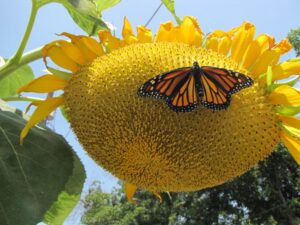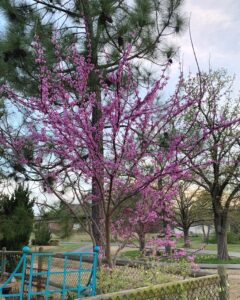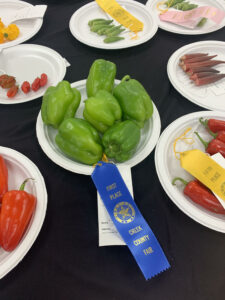Kathy Berryhill
Creek County Gardener
A beautiful container pot makes the perfect accent for patios, entryways and even gardens. Bursting with color and form, multiple plants can be grown together to add eye appeal. Container planting can be highly rewarding with a few simple tips, or it can be disastrous with a few errors. Spring containers start out vibrant and rich with color and foliage but by mid-summer, some can appear worn out and tired-looking with plants that are struggling. As temperatures climb, healthy blossoms shrivel and disappear after using available nutrients and suffering the effects of over or under-watering. Preventing this starts with paying attention to details.
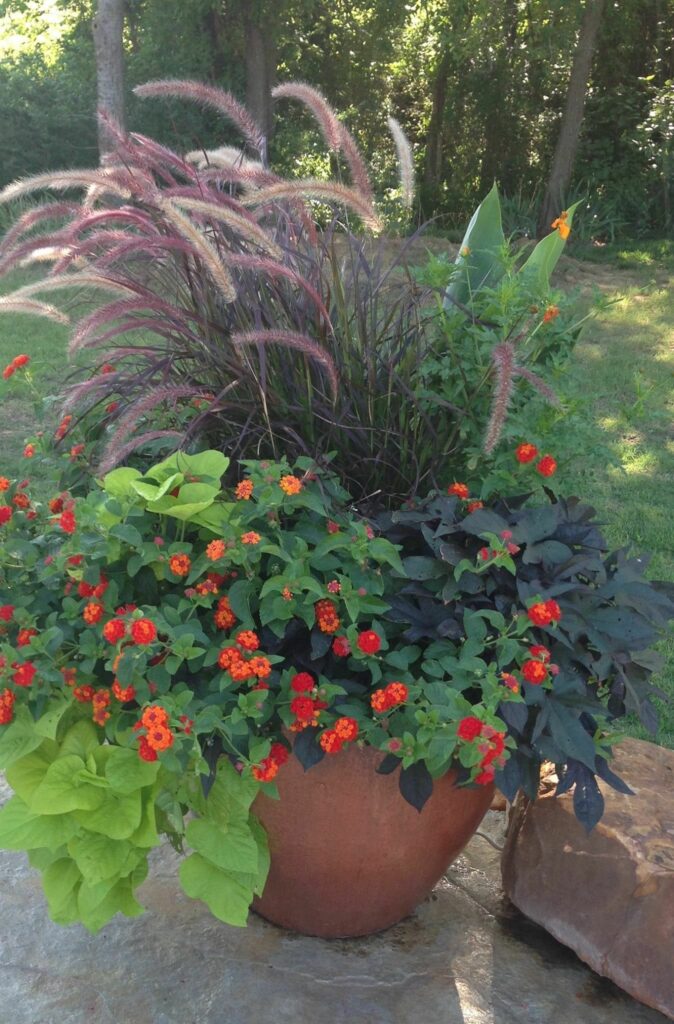
Begin with a quality potting soil or mix to provide the proper environment for plants. Potting soil is usually composed of peat, shredded pine bark and perlite to aerate the soil. This mix helps improve drainage, encourages moisture retention, and is resistant to soil compaction. Ordinary topsoil/dirt compacts very easily in containers so is not recommended. Compaction limits the amount of water and air available to the roots and can kill the plants in the container. Many thrifty gardeners will consider reusing last year’s potting soil. If doing this, replace at least 1/2 to 2/3 of the old soil with new, fresh soil. Old potting soil has used available nutrients, lost air pockets (slowing drainage) and may contain old roots and disease. Plants always perform better in new potting soil!
Criteria for selecting the correct container pot depends on many factors. Most importantly pots must have a drainage hole to release excess water. Roots that stay in submerged water will suffocate, become diseased and probably die. Note that some pots are sold with drainage holes that need to be popped out. If using a pot without a drainage hole, make ½” holes spaced 2”-3” apart in the bottom. Adding gravel, pebbles or pieces of broken pottery at the bottom of the pot helps increase drainage. Container size affects the plant’s moisture retention. A planter that’s too small will end up with crowded roots, resulting in a scarcity of water, oxygen, and nutrients that are vital for healthy, vigorous growth. Soil in a small pot will dry out more rapidly than if in a large pot. Thus, using a small pot will increase the time spent maintaining and watering the plants. As the season progresses, plants develop roots that need space that will not be available in a small pot. Always consider using a larger pot if possible. Next, consider the container material. Nonporous materials (plastic and glazed ceramic) help retain moisture, but porous materials (fabric, clay pots, concrete) contribute to increased moisture loss.
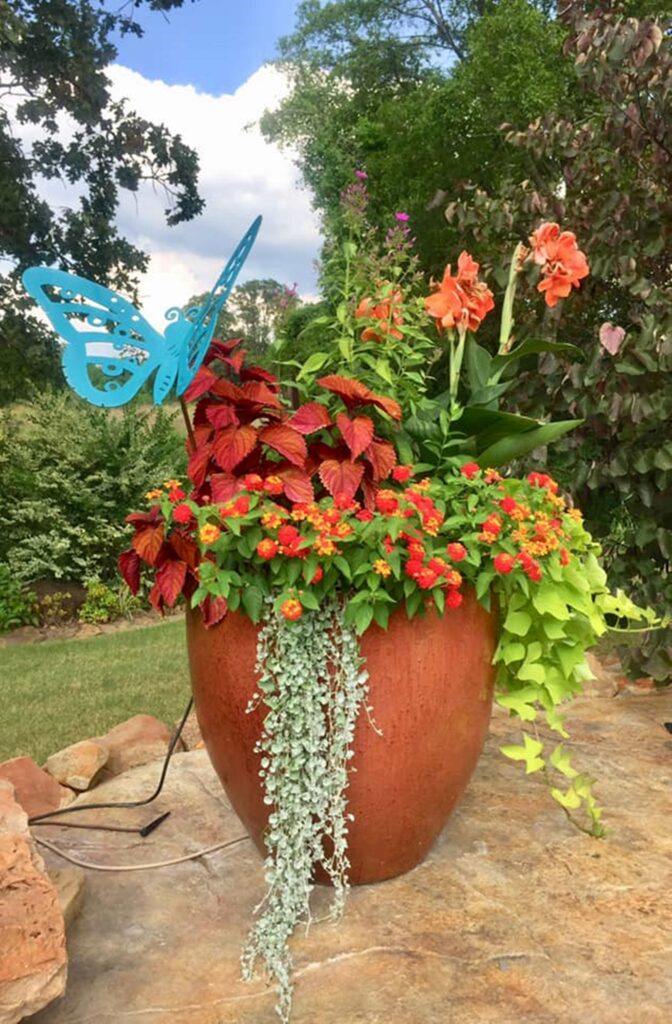
Now, plant with a well-thought-out plan! Hundreds of images of gorgeous container pots can be found online and easily copied. Choose plants that have similar requirements for water, light and fertilizer. For example, trying to put the popular Wave Petunia together with lantanas may work if just considering light requirements, but their feeding needs differ, requiring different pots. Wave Petunias stay vibrant with a light, liquid fertilizer every 7-10 days. On the other hand, lantanas prefer monthly fertilizing so using the same plants in one container wouldn’t be the best fit.
Gardeners often construct pots using the “thriller, filler, spiller” rule of thumb. The thriller needs to be a tall striking plant that works to create a focal point. Thrillers can be flowering, foliage or ornamental grass plants. Examples include cannas, King Tut or Japanese Blood grasses, summer phlox and bee balm. If the container is large enough, a small shrub could also provide the needed size. A spiller spills over the edge and trails down the pot. Plant the spiller towards the edge of the pot. Consider using sweet potato vine, vinca, creeping jenny, moneywort or ivy. Finish the pot with a good filler plant to fill in the space between the thriller and the spiller. A filler should be a full mounding plant. The possibilities are endless but remember to coordinate the filler’s needs with the thriller and spiller. Supertunias, Superbells, caladiums, begonias, and lantana make good fillers.
Now that all your work is done, frequent checking on containers is important. Early identification of problems is key to controlling them. Next week’s article will highlight ways to groom and prevent/control diseases. Questions? Contact gardening@sapulpatimes.com
Mark your calendar for this year’s CCMG Garden Tour on June 18th!


